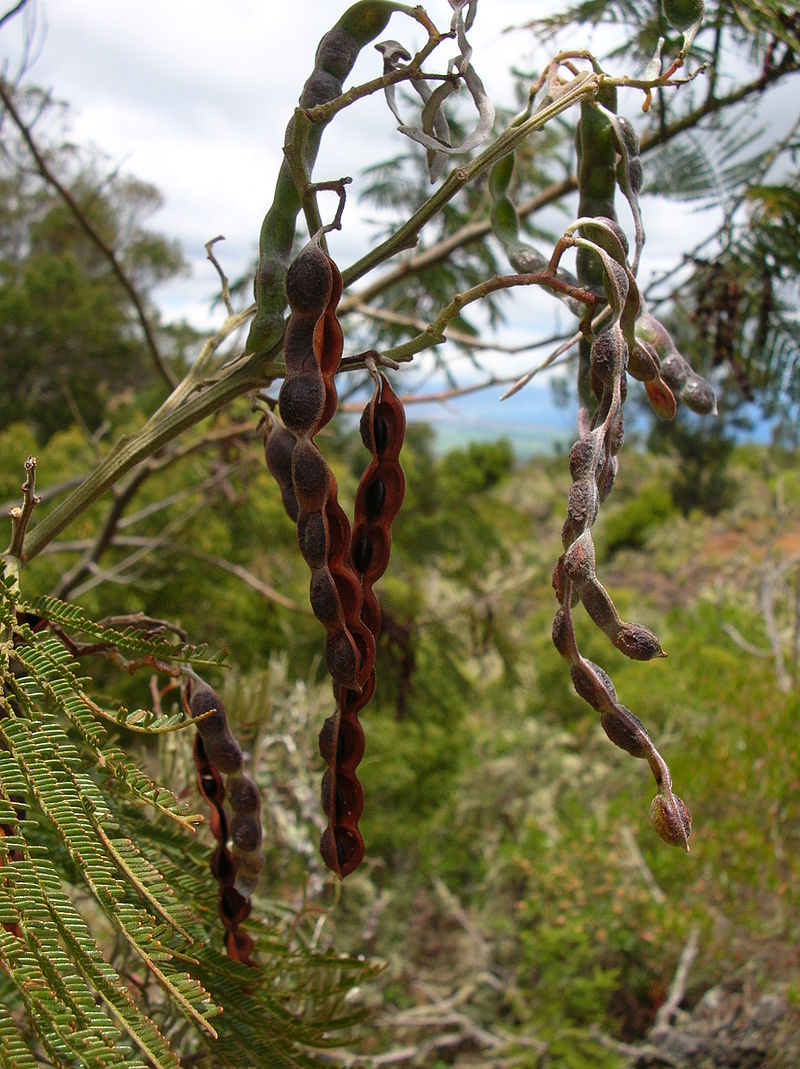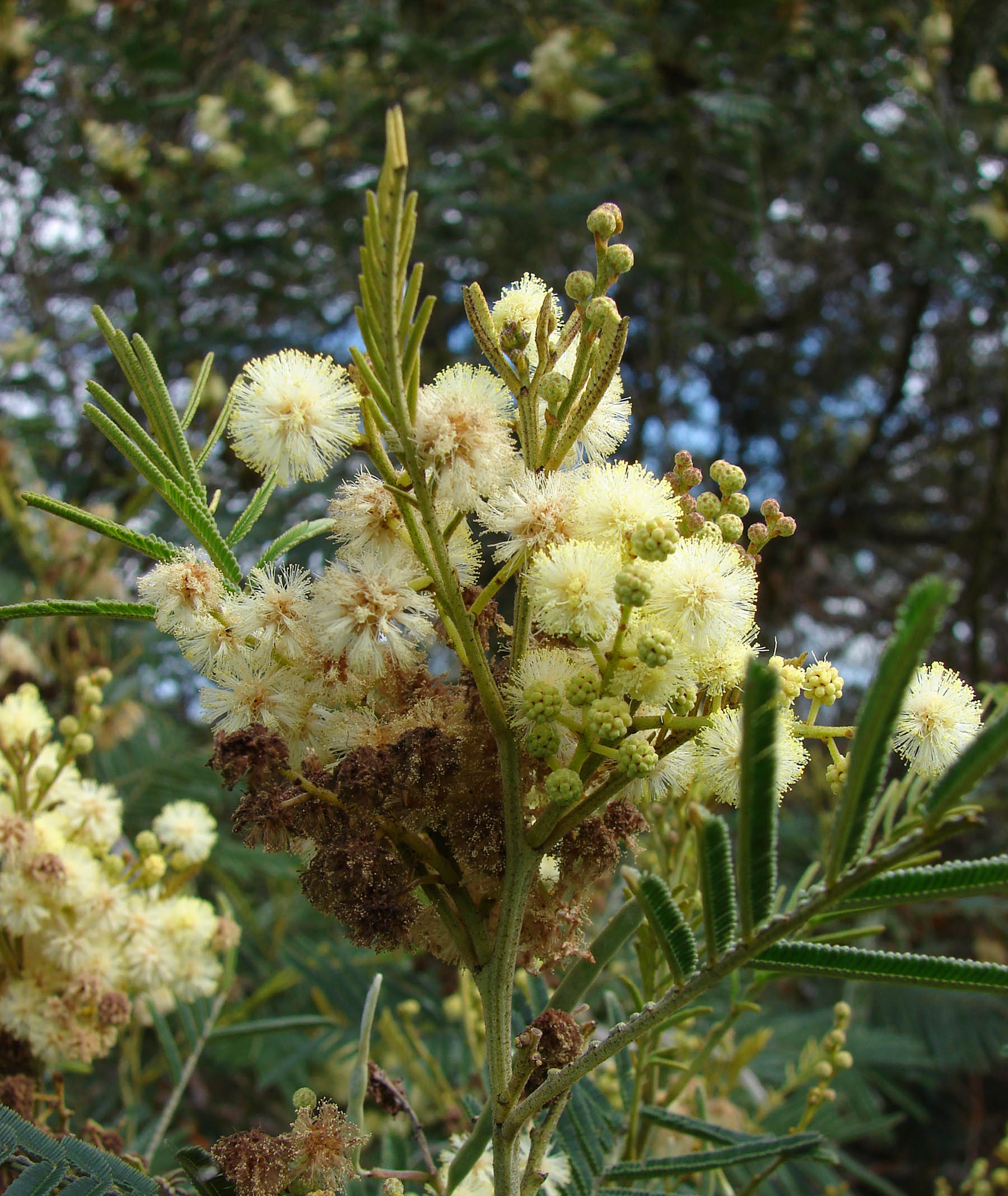The Black Wattle plays an important role in Australia's ecosystems. As a pioneer plant it quickly binds erosion-prone soil following bushfires. Like other leguminous plants, it fixes the atmospheric nitrogen in the soil. Other woodland species can rapidly use these increased nitrogen levels provided by the nodules of bacteria present in their expansive root systems. Hence they play a critical part in natural regeneration after bushfires.
Spreading tree which grows to 5 - 15 m tall. Bark is smooth and of greenish-brown colour on young branches. Blackish and rough on trunk. Distinct yellow flowers in September to December.
Leaves
Fern-like bipinnate leaves (leaflets that are further subdivided in an arrangement of leaves on either side of the stem). Olive green in colour. Raised glands are present at the junction of and between each pinnae (little leaf).
Flowers
Pale yellow or sometimes cream coloured ball-shaped inflorescences (clusters of flowers arranged on a stem). Flowering occurs from September through to December. Highly perfumed.
Fruits/Seeds
Seed pods are dark brown to black in colour with a straight to curved shape. They are flat and are 3 - 12 cm in length and 4.5 - 8 mm wide. Seed pods are leathery to touch and strongly constricted between seeds.
Field Guide
Improve your identification skills. Download your Black Wattle field guide here!





